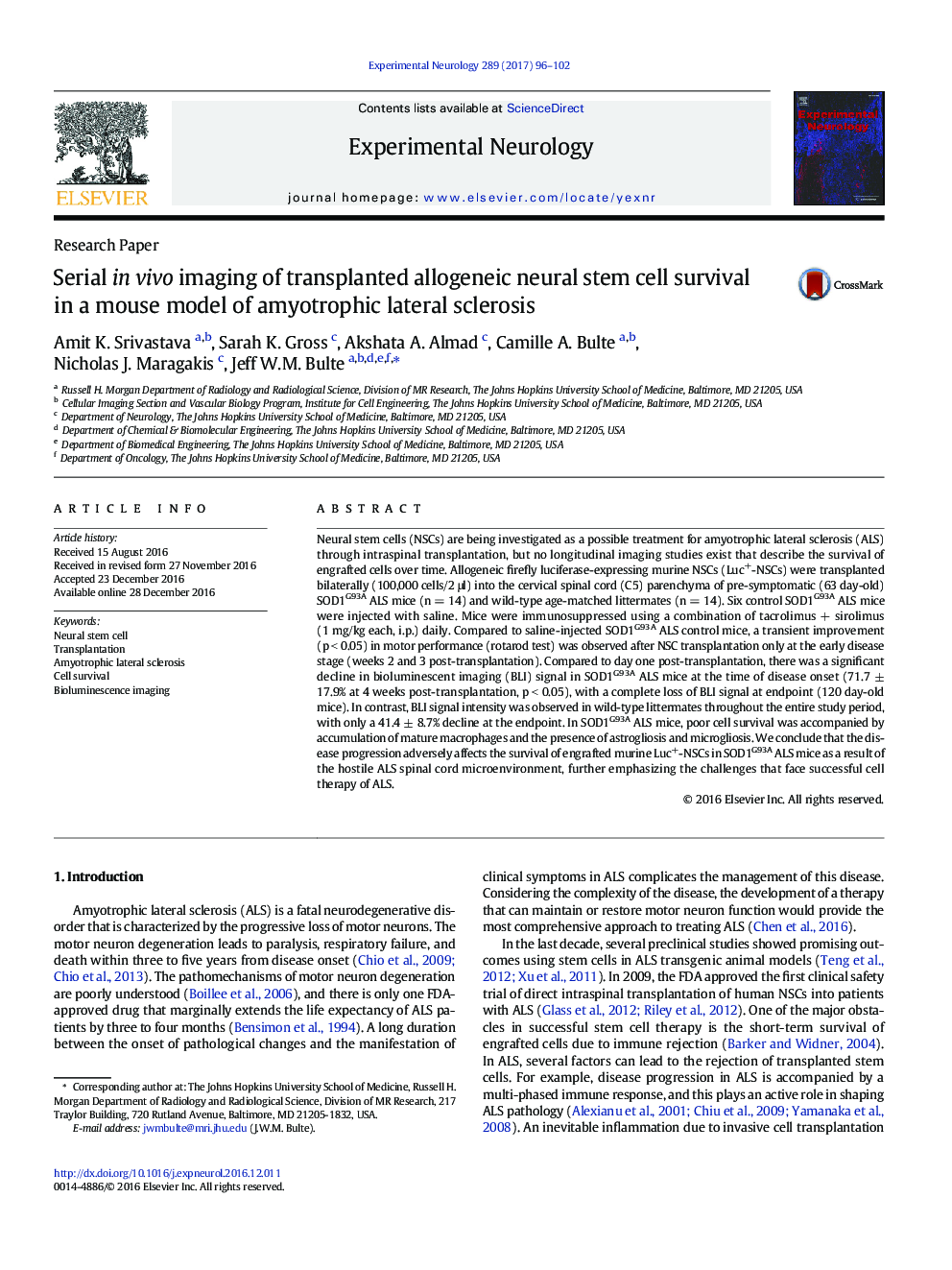| کد مقاله | کد نشریه | سال انتشار | مقاله انگلیسی | نسخه تمام متن |
|---|---|---|---|---|
| 5629354 | 1580150 | 2017 | 7 صفحه PDF | دانلود رایگان |

- Bioluminescence imaging is well suited to monitor the survival of intraspinally transplanted neural stem cells over time.
- The survival of transplanted allogeneic neural stem cells was adversely affected by the ALS disease progression.
- The poor transplanted cell survival was due to the hostile spinal cord microenvironment in ALS.
Neural stem cells (NSCs) are being investigated as a possible treatment for amyotrophic lateral sclerosis (ALS) through intraspinal transplantation, but no longitudinal imaging studies exist that describe the survival of engrafted cells over time. Allogeneic firefly luciferase-expressing murine NSCs (Luc+-NSCs) were transplanted bilaterally (100,000 cells/2 μl) into the cervical spinal cord (C5) parenchyma of pre-symptomatic (63 day-old) SOD1G93A ALS mice (n = 14) and wild-type age-matched littermates (n = 14). Six control SOD1G93A ALS mice were injected with saline. Mice were immunosuppressed using a combination of tacrolimus + sirolimus (1 mg/kg each, i.p.) daily. Compared to saline-injected SOD1G93A ALS control mice, a transient improvement (p < 0.05) in motor performance (rotarod test) was observed after NSC transplantation only at the early disease stage (weeks 2 and 3 post-transplantation). Compared to day one post-transplantation, there was a significant decline in bioluminescent imaging (BLI) signal in SOD1G93A ALS mice at the time of disease onset (71.7 ± 17.9% at 4 weeks post-transplantation, p < 0.05), with a complete loss of BLI signal at endpoint (120 day-old mice). In contrast, BLI signal intensity was observed in wild-type littermates throughout the entire study period, with only a 41.4 ± 8.7% decline at the endpoint. In SOD1G93A ALS mice, poor cell survival was accompanied by accumulation of mature macrophages and the presence of astrogliosis and microgliosis. We conclude that the disease progression adversely affects the survival of engrafted murine Luc+-NSCs in SOD1G93A ALS mice as a result of the hostile ALS spinal cord microenvironment, further emphasizing the challenges that face successful cell therapy of ALS.
Journal: Experimental Neurology - Volume 289, March 2017, Pages 96-102